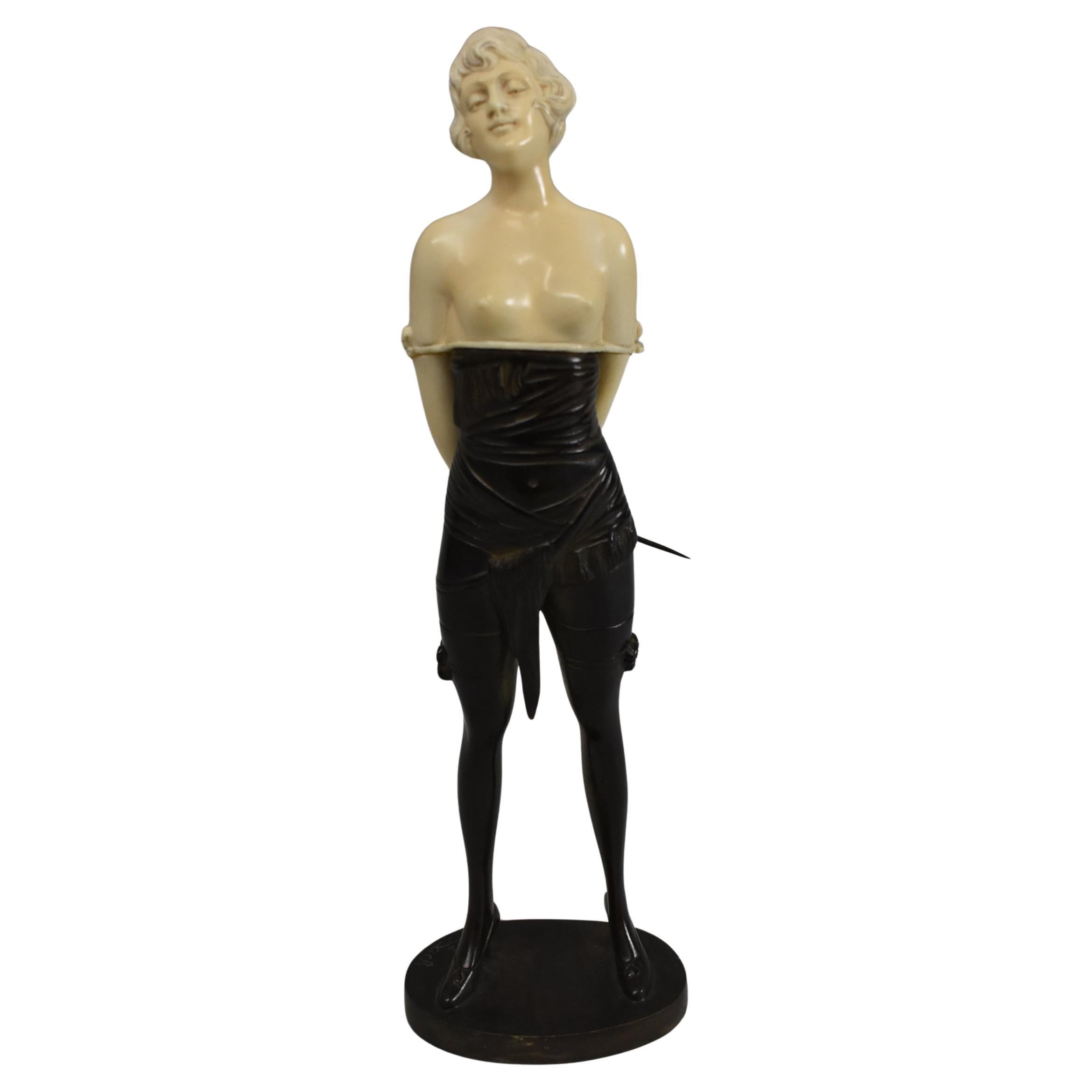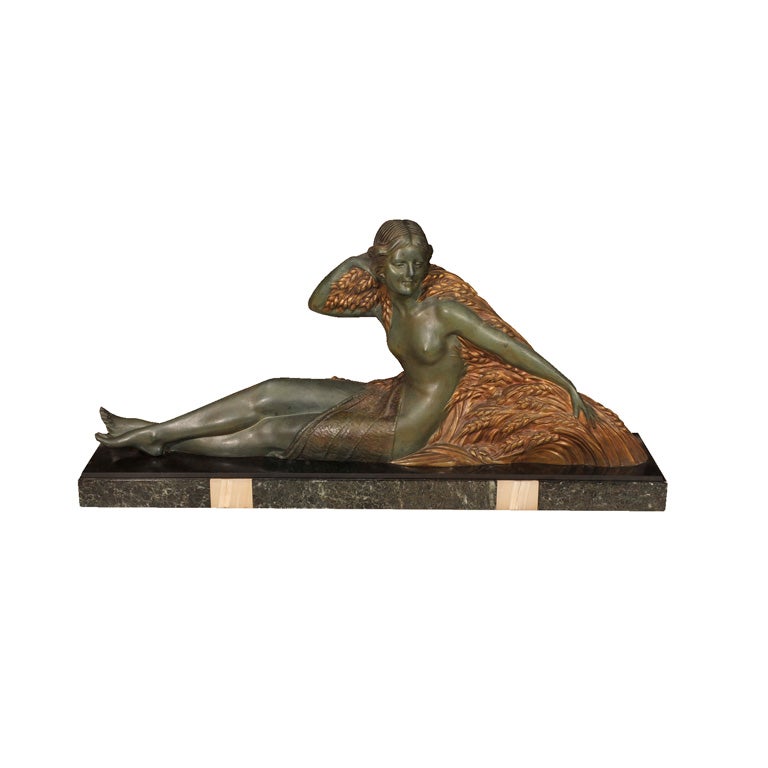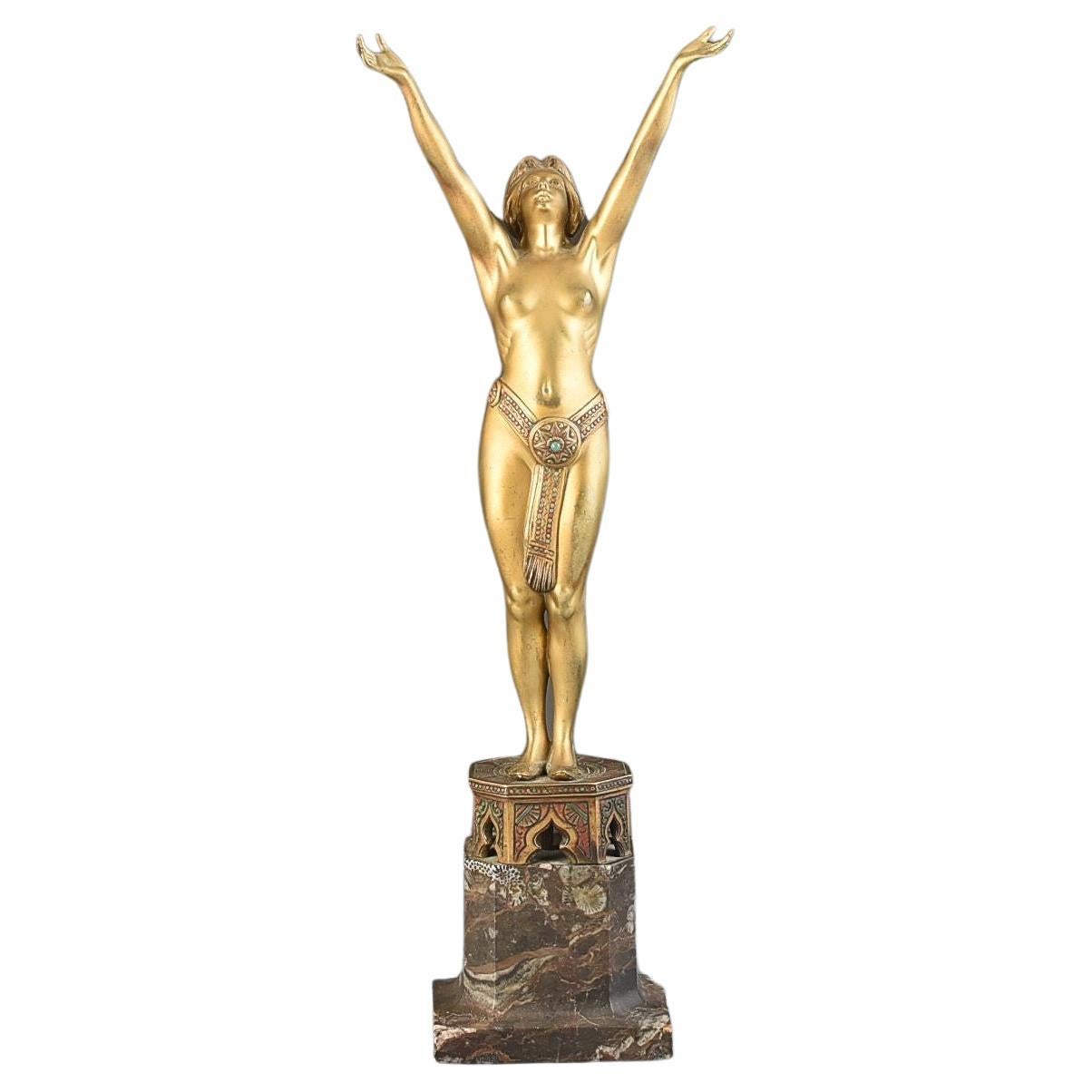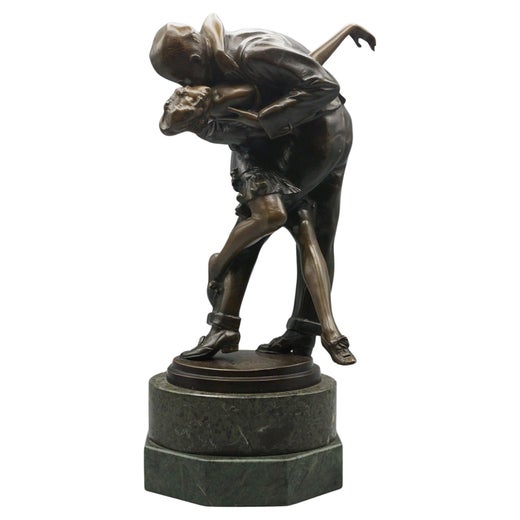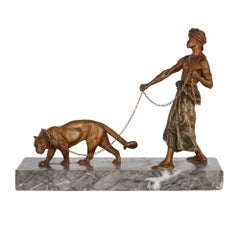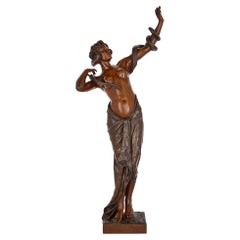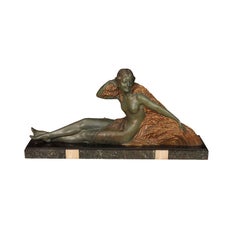Patinated Bronze Art Deco Figural Sculpture, Signed by Bruno Zach
About the Item
- Creator:Bruno Zach (Artist)
- Dimensions:Height: 13.78 in (35 cm)Width: 5.91 in (15 cm)Depth: 3.94 in (10 cm)
- Style:Art Deco (In the Style Of)
- Materials and Techniques:Bronze,Patinated
- Place of Origin:
- Period:
- Date of Manufacture:Early 20th Century
- Condition:
- Seller Location:London, GB
- Reference Number:Seller: 12784B1stDibs: LU956330751322
Bruno Zach
Bruno Zach was an Austrian art deco sculptor of Ukrainian birth who worked in the early-to-mid 20th century. He emigrated to Austria as a young man and studied at the Vienna Academy under sculptors Hans Bitterlich and Josef Müllner. He worked in Austria as well as in Germany. Famous for his Fine bronzes made for the Wiener Bronze, or Vienna Bronze manufactory, the Ukrainian-born Zach was best known for his figures of flirtatious, sexually liberated young women.
- ShippingRetrieving quote...Shipping from: London, United Kingdom
- Return Policy
More From This Seller
View AllEarly 20th Century Austrian Figurative Sculptures
Marble, Bronze
Early 20th Century European Art Deco Figurative Sculptures
Marble, Ormolu
Antique Late 19th Century Austrian Art Deco Figurative Sculptures
Bronze
Antique Late 19th Century French Figurative Sculptures
Bronze
Early 20th Century French Art Deco Figurative Sculptures
Marble, Ormolu, Bronze
Antique 19th Century French Neoclassical Figurative Sculptures
Bronze
You May Also Like
Early 20th Century Figurative Sculptures
Bronze
Vintage 1930s French Art Deco Figurative Sculptures
Bronze
Vintage 1930s French Art Deco Sculptures
Marble, Bronze
Early 20th Century Austrian Art Deco Figurative Sculptures
Onyx, Bronze
Vintage 1920s Austrian Art Deco Figurative Sculptures
Bronze
20th Century French Art Deco Figurative Sculptures
Bronze
Read More
Exquisite Sèvres Porcelain Brings More to the Table than Dishes
The elegant ceramics represent the best of French artistry and innovation.
What Is Ormolu, and Why Are We Talking about It?
This golden material glamorized neoclassical furnishings and transformed upper-crust sitting rooms from France to Philadelphia in the 18th and early 19th centuries.
